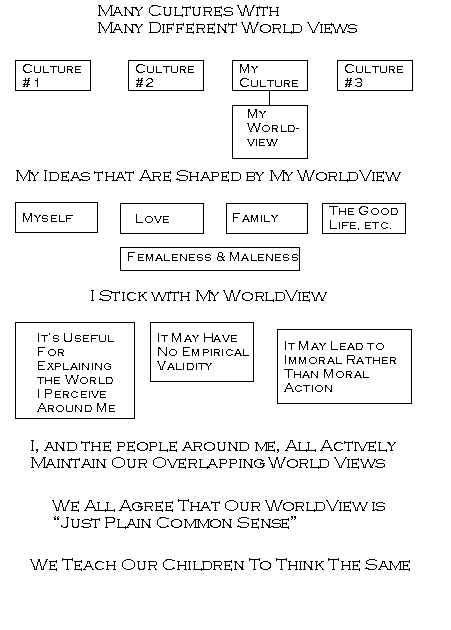More Information About Dr. Prager's work
Processes in Couple Relationships
Teaching and Professional Practice
Selected Papers and Publications
For Students:
Lecture Outline:
Social Constructionist View of Gender
Constructed means: Added to fill in an otherwise seemingly incomplete picture.
B
asic precepts:1) Cultures develop and share ways of understanding reality.
2) Understanding is a social product.
3) Understandings are persistent because they're useful more than because they are "true."
4) Understanding provides a map for social action.
Main point:

We are actively engaged in understanding the world around us. Our shared understanding becomes defined as "common sense."
What knowledge is likely to be socially constructed?
4 types of knowledge (based on Kant):Synthetic a posteriori
Analytic a priori
Analytic a posteriori
Synthetic a priori
Synthetic a prior statements are most likely to be socially constructed (i.e., the products of "intuition.")
Gender is socially constructed, which means: 1) gender is a set of ideas2) these ideas guide behavior
3) "doing gender" is explained by ideas and the associated behavior
Why hypothesize that gender is socially constructed?
1) Cultural variations in ideas about gender2) Cognitive and cultural forces actively maintain gender distinctions
Gender is influential because it is an important idea.
1) We use it often.2) Gender schemas encompass many ideas.
3) Important ideas affect what we say & do. These are called gender biases.
Gender biases in science
1) Historical: intelligence & brain size.2) Current: alpha & beta bias
Exaggerators (alpha bias)
Minimizers (beta bias)
"Gamma bias" -- questions themselves are determined by our social constructions.
When is gender as a social construction problematic?